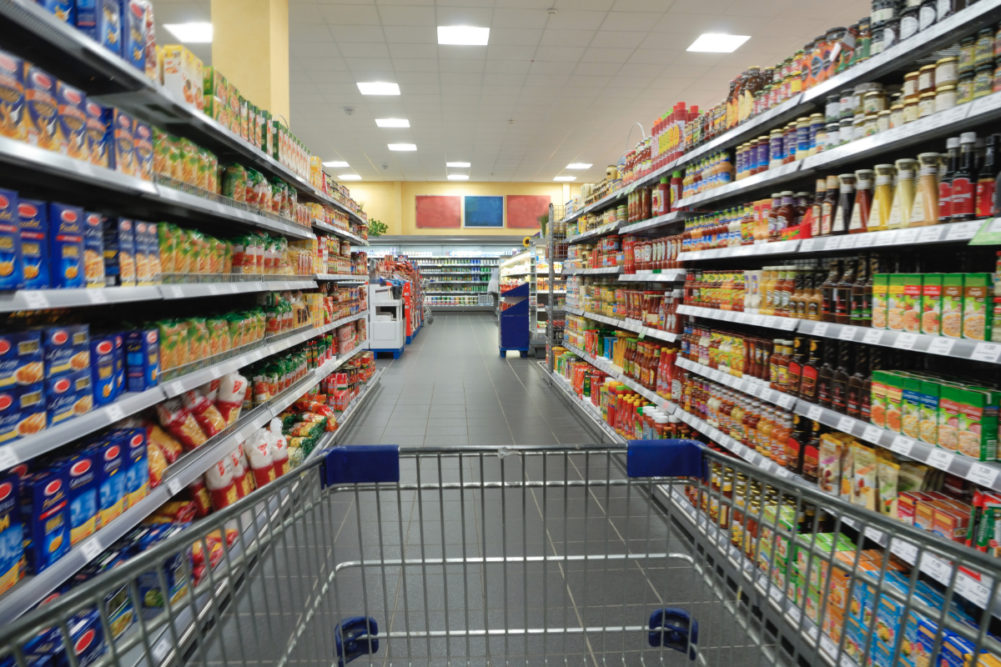NEW YORK — Home food consumption is expected to decline over the next 18 months as consumers return to more normalized spending patterns before returning to growth in 2022, according to a new report from Moody’s Investors Service.
In an Oct. 28 update, Moody’s said it expects sales and earnings within the packaged foods industry to decline beginning in the first quarter of 2021, falling short of the surge in retail demand that took place early in 2020.
Despite the expected decline, Moody’s maintained its stable outlook for the packaged foods industry, noting it expects EBIT growth to remain positive over the next 18 months. The residual benefits from the pandemic, especially for large packaged foods companies, also will factor into solid earnings growth for 2022 and beyond, Moody’s noted.
After peaking in the second quarter of 2020, operating margins are expected to narrow, Moody’s said.
“During the grocery buying surge between March and June, packaged foods sector margins expanded by as much as 50 basis points, reflecting benefits from operating leverage and reduced spending on promotions, new product launches and advertising that more than offset coronavirus-related costs and sharp declines in foodservice earnings,” Moody’s said. “Looking to 2021, we expect operating profit margins will give up almost all of these gains — tightening about 50 basis points, reflecting retreating volumes as consumers return to restaurant dining and higher trade spending.”
Another issue to watch over the next 18 months will be consumer eating trends. In some cases, permanent consumption shifts may take place, delivering long-term benefits to the category, Moody’s said.
“Some of the benefits accrued during the pandemic will be lasting, including shifts toward at-home meal consumption, expanded distribution and increased household penetration — even as consumption trends revert unfavorably toward restaurant dining,” Moody’s said.
Moody’s said the pace of recovery in the foodservice industry is likely to be moderate as restaurants deal with restricted capacity for some time.
Large branded food makers such as General Mills, Conagra Brands and Campbell Soup Co. are positioned to benefit the most moving forward, Moody’s noted in its report, citing consumers’ tendencies to load up on familiar branded products during the height of the pandemic.
“The larger US packaged food makers benefited the most from the coronavirus-driven sales boost at retail outlets, especially during the panic buying over the spring,” Moody’s said. “As grocery retailers are now catching up with replenishing store shelves, they are returning to more normal product assortments, which will include more niche brands and store-branded products. Meanwhile, the big food producers will be resuming launches of their newest, best product ideas this fall in order to hold onto as much of their market share gains as possible.”
Moody’s said it also expects structural advantages will allow bigger competitors to retain share gains.
“Large food companies’ plans to retain recent market share gains will be supported by their scale advantages, including broad production and warehousing capabilities and nationwide distribution networks,” Moody’s said. “These advantages give them greater ability to serve their customers, especially when demand surges, and in the process will further strengthen key relationships and accelerate penetration of their brands.”
The ability to shift production to other plants while facilities were being cleaned or under quarantine was a key advantage for large food companies, as was access to expansive warehouse facilities, Moody’s said.
The momentum generated by large food companies is likely to slow the recovery of smaller players in the packaged foods industry, Moody’s said, although it is still likely that big brands will cede some share gains to smaller brands as retailer and consumer inventories continue to normalize. The shift, though, is expected to be gradual because of the lasting commercial gains by big brands in retail distribution, household penetration and brand equity, Moody’s said.





